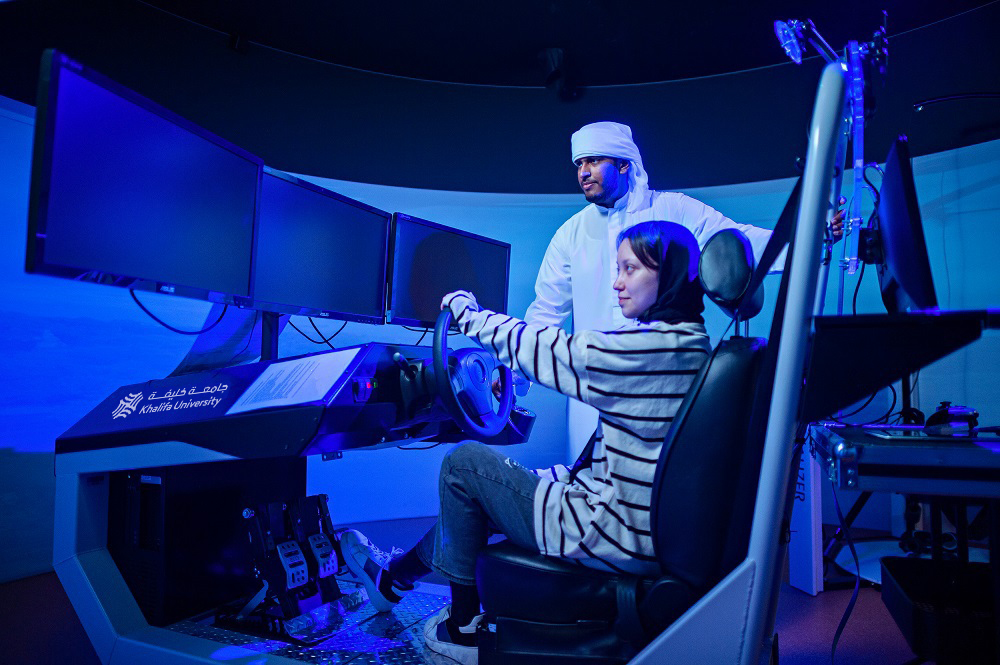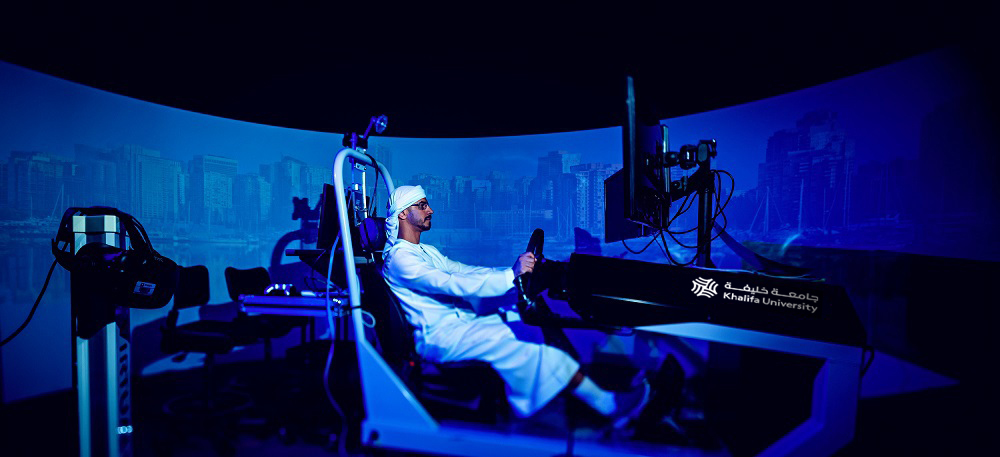


A 360-degree fully immersive virtual reality igloo lets users explore realms of opportunity and discovery
There are certain places in the world it is difficult to access. Not everyone hasVi access to natural environments, for example, and nobody can just walk into a nuclear power plant for a look around. With virtual reality, however, access to anything imaginable is possible.
Virtual reality is a simulated experience that can be similar to or completely different from the real world. For Dr. Saed Talib Amer, Senior Lecturer in the Department of Industrial and Systems Engineering, the virtual reality in his igloo is as realistic as possible to allow the real world to be explored and experienced within the cylindrical structure contained in a single laboratory.
VR without the headset, the virtual igloo provides a 360-degree interactive video. Five projectors mounted on the ceiling generate realistic images, sounds and other sensations that simulate a physical world around you. Anyone standing in the igloo can look around this artificial world, move around in it, and interact with virtual features or items.
Driving simulators are a well-known example of virtual reality, giving the driver on board the impression of driving an actual vehicle by predicting the outcome of driver input and feeding back corresponding visual, motion and audio cues to the driver. In the KU igloo, users can sit in a simulator and have a 360-degree view of their driving experience, with the unique opportunity to practice checking their blind spots, an option not available with a headset or traditional single screen display.
There is a wide variety of applications for the virtual reality igloo beyond enjoying being surrounded by nature or practicing your signaling and maneuvering; its main use is in training. As Dr. Amer says, if you want staff to practice a fire drill, you can’t just set a fire in the main lobby for some added realism. In virtual reality, you can. The igloo can be used as a tool to train people for dangerous situations where real life training might be too hazardous.

It can also be fully immersive, with one current igloo project working on human factors in seat comfort. Physiological aspects including body pressure and different seat features may make a particular seat more comfortable, but temperature, light, sound and ambience also impact comfort, particularly in aircraft. In the virtual igloo, you can place an aircraft seat in the middle of a 360-degree simulation of an aircraft to test various features and their effects on perceived human comfort.
Using any computer aided design or other simulation tool, a model could be projected in 360-degrees around the developer, allowing them to sit right in the middle of their project. Virtual reality can help fill in the unknowns during the design process, as exploring a concept model from the inside-out helps designers understand it better.
Of course, the igloo can also be used to explore the real world. Students in nuclear engineering disciplines may not easily have the opportunity to visit a nuclear power plant without extensive time needed to get the required permissions. However, if a 360-degree video of the facility was captured during a tour, this tour could be available to anyone who can visit the igloo. Rather than a simple video showing the basics of an area, the 360-degree immersive experience would allow the user to tour the facility at their leisure, with a full 360-degree view for a full idea of the industry and setup.
Jade Sterling
Science Writer
22 March 2022






